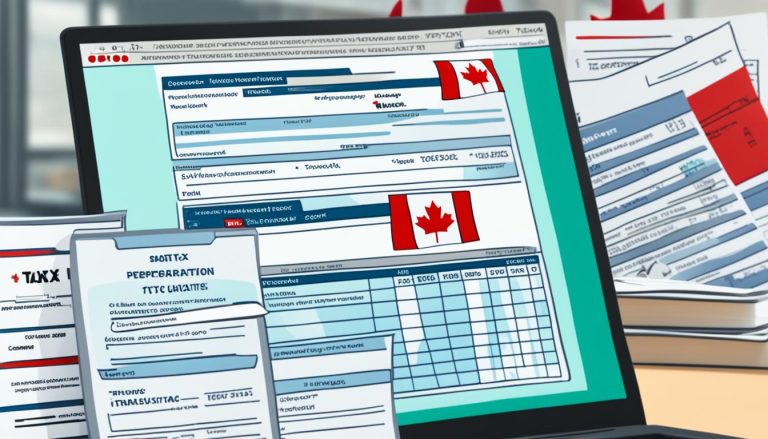Have you ever wondered how much support you can actually receive from the government when saving for your child’s education? With tuition costs climbing each year, Canadian families are increasingly turning to Registered Education Savings Plans (RESPs) to help prepare for future post-secondary expenses.
What makes an RESP truly powerful isn’t just the ability to grow savings tax-free, it’s the government grants that come with it. From matching your contributions to offering additional aid for lower-income families, there’s more funding available than most realize.
In this guide, you’ll discover exactly how much money the government can contribute to an RESP, and how you can make the most of every dollar. Let’s unpack everything you need to know so you don’t miss out on thousands in potential education funding.
What Is an RESP and Why Should You Care?

A Registered Education Savings Plan (RESP) is a powerful, government-registered savings account that helps you save for a child’s future post-secondary education.
Whether you’re a parent, grandparent, or guardian, opening an RESP can provide both investment growth and access to free money through federal and provincial grants.
RESPs offer two main advantages. First, your investments grow tax-deferred, meaning you won’t pay taxes on interest, dividends, or capital gains until withdrawal.
Second, and more importantly, RESP holders can qualify for various government grants, including the Canada Education Savings Grant (CESG), the Additional CESG, and the Canada Learning Bond (CLB).
To open an RESP, you must use a participating RESP provider and name a child with a valid Social Insurance Number (SIN) as the beneficiary.
You can start contributing as early as birth, and the earlier you begin, the more you can take advantage of grant accumulation and compound growth. RESP plans have no annual contribution limit, but there is a lifetime cap of $50,000 per child. The real incentive, though, lies in the grants, and that’s what we’ll explore next.
How Does the Canada Education Savings Grant (CESG) Work?
The Canada Education Savings Grant (CESG) is the primary government contribution to an RESP and is available to all Canadian children, regardless of household income. It’s a matching grant that rewards your contributions annually.
Here’s how it works:
- The government matches 20% of your contributions each year.
- To receive the maximum CESG of $500 annually, you must contribute $2,500 to your RESP.
- The lifetime CESG limit is $7,200 per child.
Additional points to remember:
- CESG eligibility continues until the end of the calendar year in which the child turns 17.
- You can carry forward unused CESG amounts, allowing you to receive up to $1,000 in a single year if you missed out in previous years.
- To qualify at ages 16–17, the RESP must have received a minimum of $2,000 in total contributions or $100 annually over at least four previous years.
The CESG is one of the easiest ways to turn your savings into more money, simply by contributing regularly to your RESP.
Can You Get More Than 20%? Understanding the Additional CESG?

In addition to the basic 20% match through the CESG, families with low to middle incomes may qualify for the Additional Canada Education Savings Grant (Additional CESG), which offers extra government contributions each year.
This grant rewards eligible households by increasing the match rate on the first $500 of annual RESP contributions. Let’s break it down based on the most recent eligibility criteria.
Extra 10% or 20% for Low and Middle-Income Families
The Additional CESG provides an extra 10% or 20% on top of the standard 20% CESG. This means that qualifying families could earn up to 40% back on the first $500 they contribute each year.
Income Thresholds for 2025
Your family’s adjusted net income determines your eligibility for the Additional CESG:
- Under $57,375: You get an extra 20%, adding $100 more annually.
- Between $57,375 and $114,750: You qualify for an extra 10%, or $50.
- Above $114,750: You’re only eligible for the basic 20% CESG.
How Much Extra You Can Receive Per Year?
Combining the basic and additional CESG, here’s how much you can receive annually:
- Low income: $500 (CESG) + $100 (Additional CESG) = $600/year
- Middle income: $500 (CESG) + $50 (Additional CESG) = $550/year
- High income: $500/year only
Comparing Income Levels and CESG Amounts
| Adjusted Family Net Income (2025) | Additional CESG | Total CESG per Year | Lifetime CESG Max |
| Less than $57,375 | 20% = $100 | $600 | $7,200 |
| $57,375 to $114,750 | 10% = $50 | $550 | $7,200 |
| Above $114,750 | Not eligible | $500 | $7,200 |
The Additional CESG can help you reach your savings goals faster, especially when combined with other RESP benefits. It’s a smart way to increase returns without additional investment.
What Is the Canada Learning Bond (CLB) and Who Qualifies?

The Canada Learning Bond (CLB) is designed for children from low-income families and offers RESP contributions without requiring any personal contributions from you. It’s a valuable grant for families who want to start saving for education but may not have funds to contribute immediately.
Here’s how the CLB works:
- Eligible children receive $500 in the first year they qualify.
- An additional $100 is added each year of continued eligibility until the child turns 15.
- The maximum total CLB a child can receive is $2,000.
Eligibility criteria for the CLB:
- The child must be born on or after January 1, 2004.
- They must have a valid Social Insurance Number and be named as a beneficiary in an RESP.
- The family must qualify for the Canada Child Benefit based on income.
- The caregiver must have filed income taxes for the years they want to receive the CLB.
The CLB is retroactive, so even if you missed applying earlier, you can still receive all eligible amounts when you open an RESP before the child turns 18. Once the child turns 18, they can apply on their own, up until they turn 21.
Do Provincial Grants Add More to Your RESP?
Yes, in addition to federal contributions, some provinces offer their own grants to further boost RESP savings. These provincial top-ups can provide extra funding based on your residence and eligibility.
British Columbia (BCTESG):
- Offers a one-time grant of $1,200.
- Your child must be between 6 and 8 years old.
- Both the parent and child must be residents of British Columbia.
- The RESP must be with a participating financial institution.
Québec (QESI):
- The Québec Education Savings Incentive adds 10% of annual RESP contributions, up to $250 per year.
- The lifetime maximum is $3,600 per child.
- It functions as a refundable tax credit, separate from CESG and CLB.
These provincial grants are stackable with federal contributions, giving your RESP even more growth potential.
How Can You Maximise Government RESP Contributions?
To get the most out of your RESP, you need to plan strategically. The government offers thousands of dollars in potential contributions, but it requires consistent participation and smart timing.
Start by contributing $2,500 each year to receive the full $500 CESG. If you missed years, you can catch up by contributing $5,000 in one year to receive $1,000 CESG, combining current and past grant room.
Apply for the CLB as early as possible if you’re eligible. Since the bond is retroactive, the earlier the RESP is opened, the more years can be claimed.
Use all eligible provincial grants based on your location. These programs are time-sensitive and may require your child to be a specific age to qualify. Always monitor your contribution history, RESP room, and eligibility timelines so you don’t lose out on available funds.
How Do RESP Grants Work at Ages 16 and 17?
While RESP contributions are accepted until a child turns 17, special rules apply for receiving CESG during the final two years of eligibility. To qualify for CESG at ages 16 and 17, certain minimum contribution conditions must be met earlier in life.
By the end of the calendar year when the child turns 15, you must have either:
- Contributed at least $2,000 in total to the RESP, without withdrawing any amount, or
- Contributed at least $100 annually in any four previous years, also without withdrawal
If these conditions aren’t met, no CESG will be paid at 16 or 17. This is why starting early, even with smaller amounts, ensures access to grants through the RESP’s full eligible duration. Keep an eye on RESP records and communicate with your provider to ensure your plan meets these thresholds by age 15.
What Are Real-Life Examples of RESP Government Contributions?

Let’s explore how government grants can impact real families with different financial situations and saving habits.
Scenario 1: Moderate-Income Family Contributing $2,500/year
Jessica and Adam contribute $2,500 annually to their daughter’s RESP starting from birth.
- They receive the full $500 CESG each year.
- Over 15 years, they collect the full $7,200 CESG.
- Their own contributions total $37,500.
- This total becomes a strong education fund that continues to grow with investment returns.
Scenario 2: Low-Income Family Receiving CLB and Additional CESG
Hailey is a single mother with limited income. She opens an RESP for her son and qualifies for CLB and Additional CESG.
- She gets $500 CLB the first year, and $100 CLB annually until her son is 15.
- She receives up to $2,000 CLB total.
- Contributing only $500/year, she receives 40% CESG = $200 annually.
- Over time, she collects $3,000 in CESG plus $2,000 CLB, totaling $5,000 in government contributions.
Scenario 3: Family Catching Up on CESG with $5,000/year
Rebecca and Sam delayed RESP contributions for the first three years.
- They begin contributing $5,000 per year once financially stable.
- Due to carry-forward CESG room, they receive $1,000 CESG/year for a few years.
- Eventually, they still reach the $7,200 lifetime CESG limit, despite the late start.
These scenarios show that whether you start early or late, RESP grants can provide significant financial boosts.
How Do You Make Sure You Don’t Miss Out on Free Government Money?
Missing out on RESP grants usually happens due to a lack of planning or awareness.
Here’s how you can avoid that:
- Start an RESP early, even if contributions are small.
- Apply for the CLB immediately if eligible.
- Contribute at least $2,500/year to receive the full CESG.
- Use catch-up room by contributing more in future years.
- Stay informed about provincial grants, like BCTESG and QESI.
- Check your child’s age and ensure grant eligibility at 16–17.
With a proactive approach, you can secure every dollar of available RESP funding before deadlines expire.
Is the Government RESP Contribution Really Worth It?

Absolutely. The RESP is more than just a savings tool, it’s a vehicle for collecting thousands of dollars in free money for your child’s education. The $7,200 CESG, $2,000 CLB, and provincial grants like BCTESG and QESI can significantly reduce future student debt.
RESPs also allow for tax-deferred growth, maximizing the value of both personal and government contributions. Whether you save a little or a lot, government support can dramatically increase your overall education fund. In short, every dollar you contribute has the potential to grow faster, safer, and smarter with the help of government funding.
RESP Grant Comparison Table
To make it easier to visualize how each grant compares, here’s a summary of RESP government contribution options:
| Grant Type | Max Annual Amount | Lifetime Maximum | Contribution Required? | Income-Based? | Province-Specific? |
| CESG | $500 (basic) | $7,200 | Yes | No | No |
| Additional CESG | $50–$100 | Part of $7,200 | Yes | Yes | No |
| Canada Learning Bond | $100/year + $500 | $2,000 | No | Yes | No |
| BCTESG | One-time $1,200 | $1,200 | Yes | No | Yes (B.C.) |
| QESI | $250/year | $3,600 | Yes | No | Yes (Québec) |
By taking advantage of these combined federal and provincial benefits, your RESP could receive over $10,000 in government contributions, a huge help toward future education expenses.
Conclusion
Saving for post-secondary education is a long-term journey, but with tools like the RESP and generous government contributions, it becomes much more achievable.
The CESG, Additional CESG, CLB, and provincial grants are designed to support every Canadian family, whether you’re starting small or making large annual contributions.
By understanding how the system works, you can unlock thousands in free funding. Take action early, plan wisely, and use the RESP to its full advantage. Your child’s future education deserves nothing less.
FAQs
How much do I need to contribute to get the maximum CESG?
You need to contribute $2,500 annually to receive the full $500 CESG each year.
Can I still receive RESP grants if I haven’t contributed in previous years?
Yes, you can catch up on missed years and receive up to $1,000 CESG in a single year.
Is the Canada Learning Bond income-dependent?
Yes, it is available to children from low-income families who qualify for the Canada Child Benefit.
Do provincial RESP grants require me to live in a specific province?
Yes, grants like BCTESG and QESI are only for residents of British Columbia and Québec respectively.
What is the lifetime maximum government contribution to an RESP?
The total CESG maximum is $7,200 per child, plus $2,000 CLB and possible provincial grants.
Can my child receive RESP grants if they’re already 16?
Only if you met specific contribution conditions before they turned 16.
Do I lose unused RESP grant room if I don’t use it?
Unused CESG room can be carried forward until the child turns 17, but any unclaimed room is lost after that.




